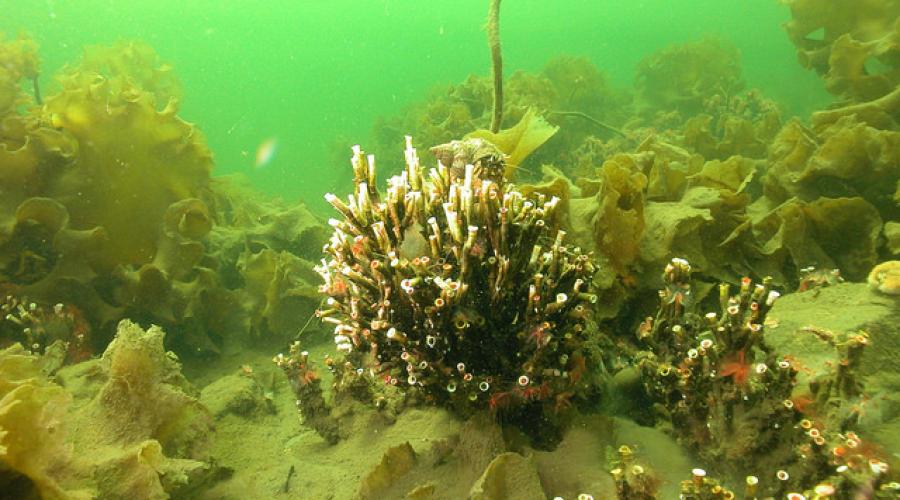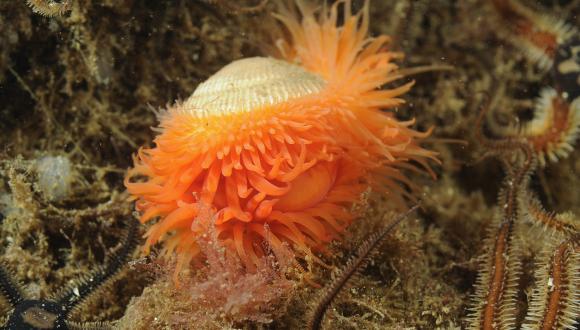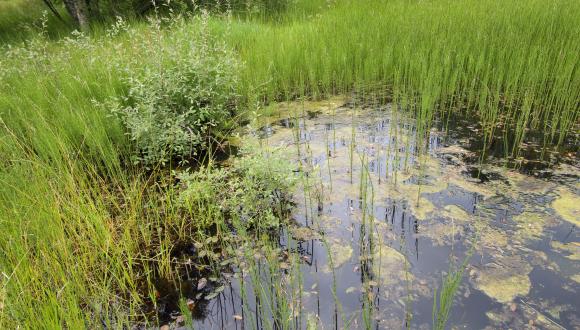
Priority marine feature (PMF) videos
View fascinating marine survey video footage of some of Scotland’s priority marine features.
Northern feather star
The northern feather star is a graceful and curious echinoderm with 10 colourful, 15cm-long arms.
The northern feather star (Leptometra celtica) is a graceful and curious echinoderm (Greek for "spiny skinned") with 10 colourful, 15cm long arms. In this fascinating clip which shows different species of feather stars in a sea loch on the west coast.
Flame shell
Flame shells or file shells live on the seabed inside nests built from shells, stones and other materials. Divers spot them only rarely.
Flame shells (Limaria hians) are beautiful bivalve molluscs with a spectacular fringe of orange tentacles - also known as file shells. Flame shells live on the seabed inside nests, which they build from shells, stones and other materials around them. Although rarely seen by divers, in this rare clip, a flame shell seeks shelter after nest disturbance.
Credit: NatureScot
Maerl: a hard seaweed
Maerl beds are an important habitat for a wide range of smaller marine plants and animals. They’re great places for juvenile animals to hide from predators. Many bivalves, urchins, sea cucumbers, anemones and worms burrow in the maerl gravel beneath the living bed. In places where wave movement stirs the seabed, maerl beds develop into a ‘ridge and furrow’ formation.
Wester Ross maerl bed
Seagrass beds
Many fish and small invertebrates live among seagrass beds, sheltering between the swaying leaves of the plants. Common eelgrass is one type of seagrass. The beautiful kaleidoscope jellyfish (Haliclystus auricula) is strongly associated with seagrass beds.
Many different fish and small invertebrates live amongst seagrass beds, sheltering between the swaying leaves of the plants. They make an ideal home on Sound of Barra.
Serpulid reefs
Loch Creran’s serpulid reefs grow at depths of 6 to 10m, and reach sizes of up to 75cm high and 1m across. Also known as tubeworms, the reefs create a high-rise home for a host of animals.
A dogfish Investigates a serpulid reef in Loch Creran
The organ-pipe worm (Serpula vermicularis) is a beautiful marine tubeworm with a showy crown of colourful feathery tentacles.
Basking shark
Scotland has a few great locations for spotting basking sharks. These gentle giants have no teeth and grow to around 10m on a diet of plankton. Basking sharks prefer open waters, but move closer to shores in summer. Look for the fish feeding at the surface, with their huge mouths wide open.
This fascinating video highlights the research undertaken to help identify and underpin a Marine Protected Area for one of Scotland's most iconic marine species.
We are lucky to have the second largest fish in the world cruising Scottish waters each summer - an exciting sight! The basking shark grows to around 10m (33ft) long, and a few places in Scotland are particularly good for seeing them.
Credit: NatureScot





